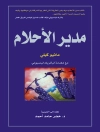The book offers important insight relevant to Corporate, Government
and Global organizations management in general. The internationally
recognised authors tackle vital issues in decision making, how
organizational risk is managed, how can technological and
organizational complexities interact, what are the impediments for
effective learning and how large, medium, and small organizations
can, and in fact must, increase their resilience. Managers,
organizational consultants, expert professionals, and training
specialists; particularly those in high risk organizations, may
find the issues covered in the book relevant to their daily work
and a potential catalyst for thought and action.
* A timely analysis of the Columbia disaster and the
organizational lessons that can be learned from it.
* Includes contributions from those involved in the Investigation
Board report into the incident.
* Tackles vital issues such as the role of time pressures and
goal conflict in decision making, and the impediments for effective
learning.
* Examines how organizational risk is managed and how
technological and organizational complexities interact.
* Assesses how large, medium, and small organizations can, and in
fact must, increase their resilience.
* Questions our eagerness to embrace new technologies, yet
reluctance to accept the risks of innovation.
* Offers a step by step understanding of the complex factors that
led to disaster.
Cuprins
Notes on contributors.
Foreword: Sean O’Keefe.
Part I: Introduction.
1 Introduction: Organizational Aspects of the Columbia Disaster:
Moshe Farjoun and William H. Starbuck (New York University).
Part II: The Context of the Disaster.
2 History and Policy in the Space Shuttle Program: Moshe Farjoun
(New York University).
3 System Effects: On Slippery Slopes, Repeating Negative
Patterns, and Learning from Mistake? Diane Vaughan (Boston
College).
4 Organizational Learning and Action in the Midst of Safety
Drift: Revisiting the Space Shuttle Program’s Recent History:
Moshe Farjoun (New York University).
5 The Space Between in Space Transportation: A Relational
Analysis of the Failure of STS-107: Karlene H. Roberts, Peter M.
Madsen, Vinit M. Desai (University of California –
Berkley).
Part III: Influences on decision making.
6 The Opacity of Risk: Language and the Culture of Safety in
NASA’s Space Shuttle Program: Willie Ocasio (Northwestern
University).
7 Coping with Temporal Uncertainty: When Rigid, Ambitious
Deadlines Don’t Make Sense: Sally Blount (New York
University), Mary Waller (Tulane University), and Sophie Leroy (New
York University).
8 Attention to Production Schedule and Safety as Determinants of
Risk-Taking in NASA’s Decision to Launch the Columbia
Shuttle: Angela Buljan (University of Zagreb) and Zur Shapira (New
York University).
Part IV: The Imaging Debate.
9 Making Sense of Blurred Images: Mindful Organizing in Mission
STS-107: Karl Weick (University of Michigan).
10 The Price of Progress: Structurally Induced Inaction: Scott
A. Snook and Jeffrey C. Connor (Harvard University).
11 Data Indeterminacy: One NASA, Two Modes: Raghu Garud and
Roger Dunbar (New York University).
12 The Recovery Window: Organizational Learning Following
Ambiguous Threats: Amy C. Edmondson, Michael A. Roberto, Richard
M.J. Bohmer, Erika M. Ferlins, Laura R. Feldman (Harvard
University).
13 Barriers to the Interpretation and Diffusion of Information
about Potential Problems in Organizations: Lessons from the Space
Shuttle Columbia: Frances Milliken, Theresa K. Lant, and Ebony
Bridwell-Mitchell (New York University).
Part V: Beyond Explanation.
14 Systems Approaches to Safety: NASA and the Space Shuttle
Disasters: Nancy Leveson, Joel Cutcher-Gershenfeld, John S.
Carroll, Betty Barrett, Alexander Brown, Nicolas Dulac, Lydia
Fraile, and Karen Marais (MIT).
15 Creating Foresight: Lessons for Enhancing Resilience from
Columbia: David Woods (Ohio State).
16 Making NASA More Effective: William H. Starbuck (New York
University) and Johnny Stevenson (NASA).
17 Observations on the Columbia Accident: Henry Mc Donald
(University of Tennessee).
Part VI: Conclusion.
18 Conclusion: Moshe Farjoun and William H. Starbuck (New York
University).
Index
Despre autor
William H. Starbuck is ITT Professor of Creative Management
in the Stern School of Business at New York University. He has been
the editor of Administrative Science Quarterly and chaired
the screening committee for senior Fulbright awards in business
management; he was the President of the Academy of Management, and
he is a Fellow in the Academy of Management, American Psychological
Association, American Psychological Society, British Academy of
Management, and Society for Industrial and Organizational
Psychology. He has published more than 120 articles on accounting,
bargaining, business strategy, computer programming, computer
simulation, forecasting, decision-making, human–computer
interaction, learning, organizational design, organizational growth
and development, perception, scientific methods, and social
revolutions.
Moshe Farjoun is an associate professor at the Schulich
School of Business, York University, Toronto. His research
interests lie in the intersection of strategic management and
organization. His research has explored market and organizational
dynamics, particularly as they pertain to the processes of strategy
formulation, implementation and change. His articles have appeared
in Strategic Management Journal, Academy of Management Journal,
Organization Science, and Academy of Management
Review.












